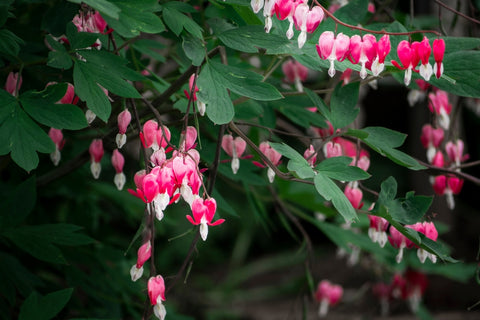
About Dicentras
Commonly known as ‘Bleeding Heart, Dicentras got their name from their plump, heart-shaped flower. Dicentras adore the shade that bloom in spring. While they stay in bloom for several weeks, the plants can become ephemeral and will disappear for the rest of the summer if exposed to too much heat or sun. Dicentras roots will stay alive and grow again in the fall or the next spring. With mature height sizes of up to 6inches tall, these flowers come in beautiful pink, purple red and white colors. Hardiness in zones 2-9.
How to Grow
- Dicentras like to be planted in organic soil in a shaded or part shaded area.
- Work a compost into the soil before planting.
- Dig a hole that’s big enough to contain all of the roots.
- For Outdoor Landscape Planting – choose a spot where the soil will drain well. Dig holes 2-2.5 inches apart and plant into the ground with the roots pointing downwards and the growing points an inch below the soil level. Fill the surrounding soil and pat down firmly around the plants.
- For Container Planting – Use well-draining and humus-rich potting soil. Use containers with good draining holes that are large enough to hold the mature size of the Dicentras. Dig holes 18 inches apart and place the roots pointing downwards and the growing points an inch below the soil level. Fill the surrounding soil and pat down firmly around the plants.
- Water thoroughly after planting and soak the soil to settle around the roots.
How to Care
- Water as needed during the active growth periods, around 1 inch of moisture per week.
- As the Dicentra begins to yellow and wither away, the foliage may be cut back to the ground. Don’t remove the foliage before it turns yellow/brown (this is the time the plant will store food reserves for next years growth)
- Regular fertilization is important for the growth of the Dicentras. When foliage starts in spring, time-release food should be worked into the soil around the plant as well as extra compost. This is important for the growth as it encourages more blooms that are longer-lasting.
- Dicentras usually reach their mature size by their third or fourth year.
